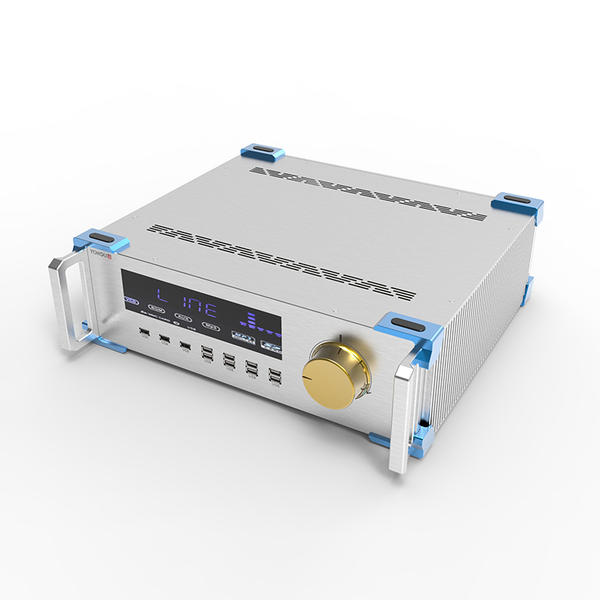In order to meet people's needs for the diversity and high quality of aluminum alloy enclosure products, it is necessary to pay attention to the aluminum alloy enclosure processing process, so how to process the aluminum alloy enclosure ?
The processing of aluminum alloy enclosure requires the control system to logically process the program with control codes or other symbolic instructions, and decode it by the computer, so that the machine tool can operate and process the parts. The rough material is processed into semi-finished finished parts by cutting tools.
(1) Blanking: Cut the aluminum alloy tube into a single piece, leaving a margin of 2 mm on one side.
(2) Clamp and cut the left end of the aluminum alloy tube into a single piece, flat the right end face, the inner and outer circles of the car to the size requirements; ensure the surface roughness requirements; sharp-angle deburring.
(3) U-turn the flat end face to the size requirement.
(4) Use thimble to hold both ends, and finish turning the outer circle to the size requirement.
(5) Milling the inner arc to the size requirement, and deburring at the acute angle. The aluminum alloy enclosure processed by the processing technology has good dimensional consistency and high product qualification rate, which is very suitable for mass production.

Cutting is a processing method that makes the cutting more reasonable, and it is also a common process in the processing of aluminum alloy enclosure s. It uses end mills with multi-directional cutting functions, spiral cutting interpolation, and contour cutting interpolation. The tool processes a small number of holes.
Ball end mills can be used with spiral interpolation to continuously process taper holes; ball end mills and spiral interpolation drills can be used for boring and chamfering processing; end mills can be used with contour cutting interpolation , Can be used for semi-finish machining and precision parts machining; the end mill for thread machining can be used with spiral interpolation to process various threaded holes.
If high-efficiency aluminum alloy precision parts are processed for high-precision holes of any size, the tool interpolation function can be used. Especially when high-speed milling is used, the load on each tooth is relatively light, so the same coated carbide end mill can be used to perform high-speed and high-precision hole processing on a variety of materials to be processed.
How to process aluminum alloy enclosure ?
2021-03-17



